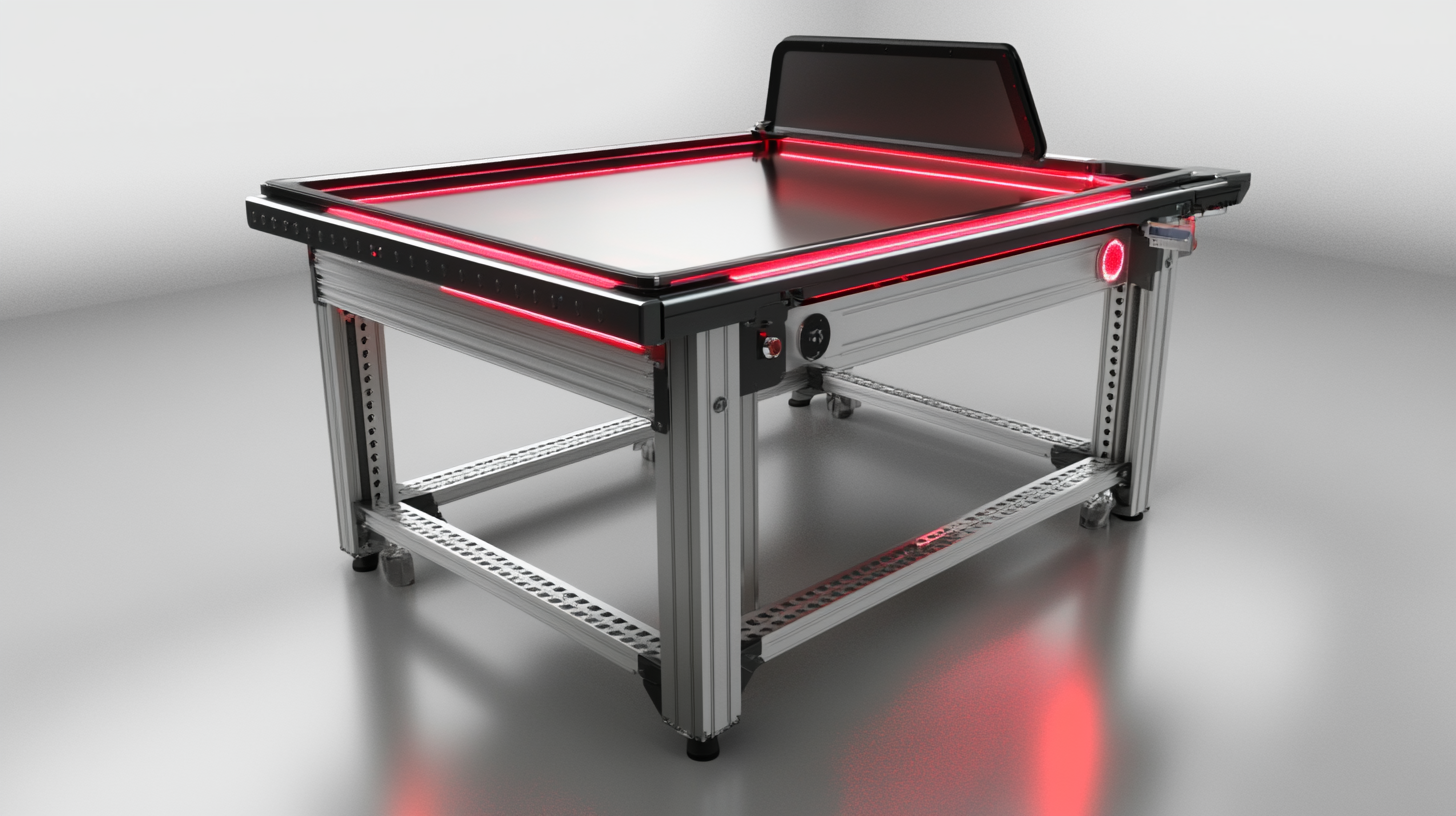How to Identify Top Quality Manufacturers for Small Plasma Tables in a Global Market
Today's landscape is brutally competitive with accurate speed demands in manufacturing processes and thus increased interests in small plasma tables. These machines are capable enough to deliver high-quality cuts with extraordinary accuracy and speed, both in large and small operations. But now, the businesses must go through various troubles that are time-consuming and painful not just in finding an appropriate manufacturer but also in checking top-quality standards before sourcing these necessary machines worldwide. Finding the right supplier is the most important factor for those who wish to incorporate a small plasma table into their operations.
To understand the presence of an ideal manufacturer when scouting markets across the globe, understanding some key characteristics that define a quality manufacturer as vital. Such manufacturers can save one from falling into the trap of poor craft, low-quality materials, and poor customer service. This blog will show how one can vet for potential manufacturers and therefore invest in a small plasma table that meets the operations' needs while keeping standards in the highest regard. Such investments will make all the difference between long-lasting success and failure in manufacturing processes.

Understanding the Global Market Landscape for Plasma Tables
The ever-shifting nature of the global plasma table market requires analysis of the landscape to home in on the best manufacturers. These plasma tables have been in great demand for a number of industries such as automotive and aerospace because they are instrumental in cutting metal with speed and great precision. Such high demand means that manufacturers come from many corners of the world, each with its own forte. Technological developments, production capacities, and quality control characteristics differ immensely across the globe, and the market scenario demands thorough understanding. Thus, the initial step involved in navigating the global market is to identify areas where plasma table manufacture flourishes. These would include such renowned machinery nations as Germany and the USA, whose engineers and innovators are forging new technologies every day. Those manufacturers traditionally devote greater capital toward R&D, whereas, on the other hand, manufacturers from the emerging markets of Asia would now stake their claim on markets that target affordable solutions without compromising quality. One can analyze these distinctions to facilitate purchase decisions regarding the manufacturers that fit their styles and budget the best. Then again, and not an odyssey, the global supply chains having become highly convoluted, we must pay attention to those entities surrounding the manufacturers themselves-the designation of partners in the supply chain. The condition of raw materials, logistics, and customer support in the industries in question may very well determine how successfully plasma tables perform for the customer. Running a thorough due diligence process will, therefore, be greatly beneficial when looking for machines that can withstand heavy use without compromising on price, which ultimately allows for a return on investment within a highly competitive marketplace.

Key Features to Look for in High-Quality Plasma Table Manufacturers
There are several fundamental features that would directly affect your choice for the best small plasma tables manufacturers in the global market today. In the first place, it is important to consider the technology capability of the manufacturers. Companies that have adopted great laser-cutting technologies recognizable for their efficiency and precision will favor the small plasma table manufacturer. As the machines become more advanced, the manufacturers make investment constraints in modern laser sources such as fiber lasers tend to construct better products for life improvement.
Also, another important consideration is the years of establishment and reputation of the manufacturer in the industry. A well-established company usually means reliability and expertise, which is important for working with a company that understands the needs of different sectors within its breadth, such as automotive and precision engineering. Also look at the customizability of the products offered by the manufacturer. High-quality manufacturers of plasma tables often provide a tailored approach that modifies their solutions to meet the various projects that they engage, thus providing versatility plus user satisfaction.
After-sales service and support are also significant when selecting a manufacturer. A good manufacturer will give strong after-sales customer services, including installation and maintenance services, upon which proper operation depends. Since the market for laser cutting and plasma technologies will still be on the rise, paying attention to these features will help identify a manufacturer that best meets your business objectives as you look for the best.

Assessing Manufacturer Reputation and Customer Feedback
Of course, the best thing to look for in top quality manufacturers for plasma tables is their reputation with testimonials from customers. According to the Manufacturing Institute, almost 77 percent of consumers want to read reviews online before they choose a manufacturer. It shows the importance of both qualitative and quantitative aspects in getting customer feedback before making a decision.
Well-reputed manufacturers usually have lots of praising testimonials posted on various sites. For instance, high-rated companies in reliability after-sales service tend to have the lowest return rates according to the National Association of Manufacturers data that showed an 18% rise in customer retention rates correlating to excellent customer support. Thus, screen potential manufacturers not just by the star limit but other nuances by perusing customer reviews.
Besides, checking for third-party certification or industry awards is an even added boost to the manufacturer's credibility. IQS Research found that manufacturers who received recognition from the industry had their perceived quality increase and thus enabled themselves to grow by sales of up to 29%. By prioritizing manufacturers who speak with their customers and have shown their quality by their feedback and recognition received, companies can find a trustworthy partner in the global small plasma table market.

Evaluating Production Capabilities and Technology Adoption
When scouting the world market for top-most manufacturers of small plasma tables, appraisal of production capabilities and technology adoption remains a prime yardstick. The production capacity of a manufacturer has a direct bearing on its ability to execute orders timely and maintain consensual quality. The working environment of a manufacturer’s facility, level of training of its personnel, and methods of production give a good perspective on its reliability and efficiency. Travelling to the production site or holding virtual tours will provide potential buyers with some insights on the application of new techniques like automation and lean manufacturing by the manufacturer.
Technology adoption is no less important, as it signals a manufacturer’s road to innovation and improvement. Manufacturers that spend on contemporary machinery and software are simply more in tune with the needs of the market and, therefore, usually produce the better products. Advanced integration of CAD/CAM systems can thus improve plasma-cutting precision to produce products with extremely tight specifications. Industry 4.0-enabled manufacturers are agile and competitive; they can keep pace with the whirlwind changes in consumer preferences.
An assessment of the manufacturer’s training and workforce development policies will enable one to gauge how skills training and retention contribute to the maintenance of production quality. Organizations ready to build a culture of continuous learning and invest in the skills of their personnel can best exploit new technologies and methodologies, thus yielding better manufacturing results. By emphasizing production capacity and technology adoption, the prospects can select and partner with manufacturers who satisfy their present needs and are also in a unique position to grow with the ever-changing global environment.
Strategies for Building Long-Term Relationships with Manufacturers
Building long-term relationships with manufacturers is a must-have, especially now more than ever, when the sourcing of small plasma tables stands against a competitive global market. The report by Grand View Research states, "The global plasma cutting machine market size was valued at USD 4.45 billion in 2022 and is expected to expand at a CAGR of 4.6% from 2023 to 2030." This development signifies the importance of identifying worthy manufacturers who can consistently deliver high-performance equipment suited to changing industry needs.
A good strategy to maintain long-term relationships between the suppliers and the buyers is to be open with all communication. With frequent touchpoints, both parties are able to discuss expectations, product specifications, and modifications in demand. The International Journal of Operations & Production Management highlights that having solid supplier relationships means more innovation with shorter lead times. In this case, feedback mechanisms could be adopted for continuous improvement, subsequently deepening the relationship with respective manufacturers.
In addition, visiting manufacturing facilities helps relationship-building substantially. Direct engagement in the production process allows businesses to experience the quality control systems and the abilities of the manufacturers involved. According to Deloitte's report, "2021 Collaborative Relationships: A Backup of Success," companies that have invested in collaborative relationships are found to be 3.5 times more likely to meet their financial objectives. A proactive approach builds mutual trust among partners and helps to ensure their mutual growth and shared vision.
